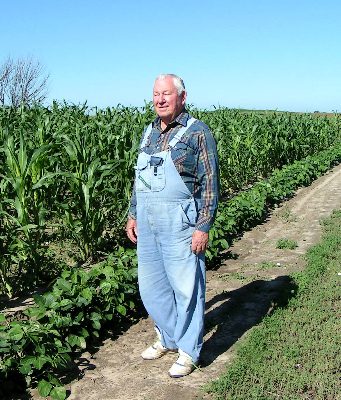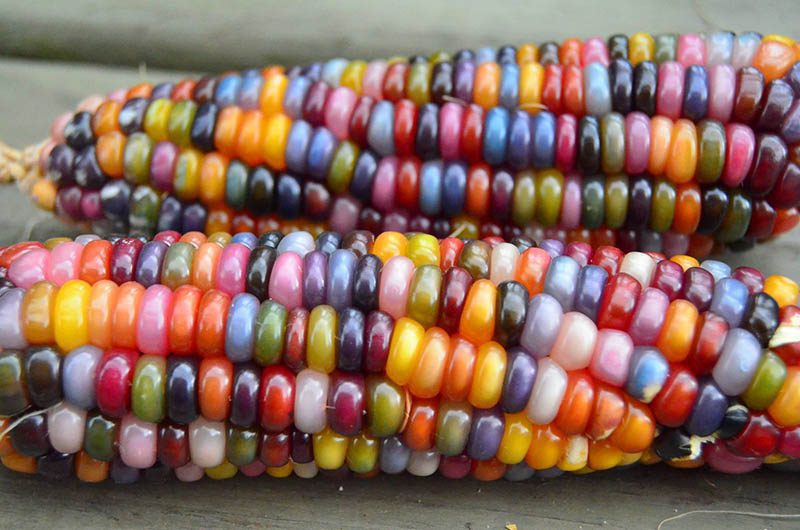Venture into a world where corn isn’t just yellow, but a spectrum of captivating colors. Imagine it as the handiwork of a man rediscovering his roots, producing kernels as diverse as a rainbow, shimmering like gems. Welcome to the world of Glass Gem Corn, a creation of love, selection, and a deep connection to heritage. This extraordinary maize variety takes us to the heartland of the Oklahoma Panhandle, where a man honored as ‘White Eagle’ embarked on a remarkable journey. Delving into the sacred legacy of Native tribes, he unveiled a treasure trove of ancestral seeds believed to have been lost forever, thereby birthing this mesmerizing maize. Uncover the riveting story behind this visually stunning corn that you can cultivate right in your backyard.
The man behind Glass Gem Corn

Born in Oklahoma in 1928, Carl Barnes was a man of Scots-Irish and Cherokee ancestry, and since his grandfather began explaining to him about his Native American side at five years of age, Carl was hooked. He wanted to know more about his heritage and the traditions behind it. One of the traditions which Carl became aware of had to do with Cherokee Corn.
In Deborah Duvall’s ‘An Oral History of the Tahlequah and the Cherokee Nation,’ it states that Carl used to relate a story stating that several hundred years ago, Cherokee corn used to bear sacred symbols, growing patterns in the kernels which would show such shapes as a dove, a buffalo, or even an eagle near the top colored portions of the kernel. The story also said that the symbols disappeared with the coming of the white man, but it was promised that one day they would return.
Carl had noticed when he was growing up that the cornfields were dotted with older varieties of maize and some of them bore fantastic coloration. He began cultivating these over the years and in the 1980’s he noticed that a white eagle pattern was emerging in the top kernels of some of ears of corn. This he would take as his ‘spiritual name’ as he continued on his quest to restore the native Cherokee corn.
Restoring what was lost
When the Cherokee were forcibly relocated during the 1830s, the impact on their culture was significant, to say the very least. By 2006 it was noted that prior to the ‘Trail of Tears’ or even before 1492, a single crop that had been cultivated by the Cherokee could not be found. This was until Pat Gwin, Director of the Cherokee Nation Seed Bank, made the acquaintance of Mr. Barnes.
Amazed by Carl’s work, Pat would take seeds from the newly-restored corn back to add to the seed bank, reclaiming the sacred corn and an important piece of the tribe’s heritage. Carl received a medal of honor from the Cherokee Nation for his work as ‘Keeper of the Corn.’
The legacy lives on
In 2012 Carl would develop his unique rainbow-hued corn, which he called ‘Glass Gem corn,’ and it’s that beautiful variety that you keep seeing popping up all over the internet. It is something that he developed very slowly, by crossbreeding Osage ‘Greyhorse’ red corn along with a number of Pawnee miniature corns.

So, can you savor this rainbow corn? Absolutely! Yet, its vibrant beauty isn’t best enjoyed straight off the cob. Instead, Glass Gem corn, a ‘flint’ variety, shines when ground into meal or dried for popcorn, providing both a culinary delight and aesthetic appeal.
Although ‘White Eagle’ passed away in 2016, his colorful legacy blooms vibrantly, stretching across the globe. Samples dispatched to Kenya, India, Israel, and more, are cultivating their unique rainbow crops, a testament to the global appeal sparked by captivating images of Glass Gem corn. It seems, wherever this corn can take root, it inevitably does.
And so, the enduring legend of Glass Gem corn continues to grow. With the ‘White Eagle’s return, the future unfolds with intriguing possibilities. Perhaps, as prophesied in the old stories, the dove and the buffalo will emerge in the multicolored ears of this remarkable corn, cultivated and cherished worldwide.


